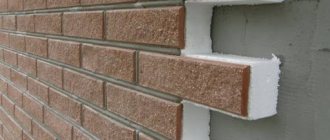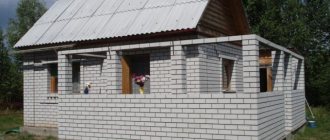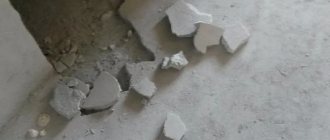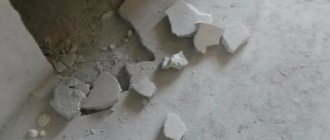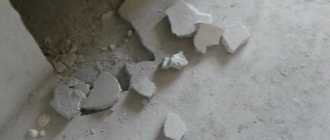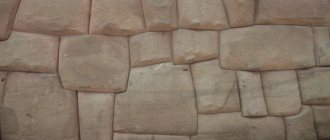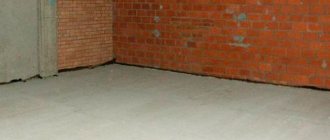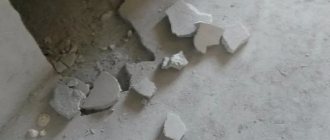For years, timber and wood processing enterprises have been accumulating waste from their activities, often without knowing or even thinking about what to do with it. Meanwhile, this is money lying under your feet. Chips and wood chips are the main material in the production of environmentally friendly building material wood concrete (sawdust concrete).
Without going into details of the economic component of this business, since this is a separate topic for discussion, we will only note that the business is very profitable, and most importantly, in demand in the field of private, urban and industrial construction.
According to the most conservative estimates, you can earn up to 500 thousand rubles monthly from the production of wood concrete blocks and panels. Agree, it is simply not reasonable for timber merchants to lose such additional income. And organizing an independent sawdust concrete enterprise will bring no less benefits.
Introduction
One of the representatives of the “family” of cellular concrete is sawdust concrete. Developed and passed all tests back in Soviet times, due to its low cost it became popular at the height of the last decade of the last century.
The main advantages of using sawdust concrete:
- No harm to the environment, unlike polystyrene concrete;
- Complete fire safety;
- Steam conductivity (Buildings can “breathe”);
- Thermal performance indicators;
- Resistant even against severe frosts;
- Economic profitability of use.
My new book
Quite recently, my new book “Business on sawdust and woodworking waste” was published. The book will help a novice businessman figure out which direction he should move in order to achieve the best results in the shortest possible time.
The book provides specific calculations that clearly indicate that with such and such parameters, you are better off starting this business, and with other initial data, it is better to start another business. More information about receiving a book can be found in the “BOOKS” section in the top menu.
Necessary tools and forms
Not only experienced builders, but also novice craftsmen are increasingly deciding to make sawdust concrete with their own hands. Manufacturing technology involves the presence of formwork panels. They must be measured correctly so that the blocks are as even as possible. It is desirable that the boards for the shield have a thickness of 38 mm. Sawdust must be sifted to remove accumulated debris and stones. When the chips and bark are sorted, you need to add prepared wood shavings to them. This way you can increase the final strength of the material several times.
The solution can be laid in two types of forms:
Experts say that it is necessary to start laying the prepared solution immediately, since after a few hours it will begin to harden. It must be remembered that before use, the internal parts of the formwork must be moistened with plain water.
The solution must be laid in neat layers of 150 mm. In this case, each part must be carefully compacted, as this prevents the formation of voids.
After four days, the formwork must be carefully removed (but only if the solution has completely hardened). But it is advisable to leave the sawdust blocks to dry for another four days. This is done in order to increase the final strength of the material. It is also worth considering that for drying the blocks being made, it is best to use the area where there are drafts so that the solution hardens evenly. There must be a gap between each sawdust block. If it is going to rain, then the material must be covered with film to prevent it from getting wet.
To guarantee drying, poles must be used. Blocks can be laid on bricks. Thanks to such manipulations, it is possible to achieve 90% strength after a month of such drying.
Scope of application of sawdust concrete
- Can be used for insulation and soundproofing of any premises.
- Environmentally friendly housing. Construction made from this material has a long service life. Construction of buildings according to projects, for houses made of other materials.
- Extremely low-cost construction. A building made from such a lightweight material does not require any very solid foundation to be laid underneath it.
Conclusion
From this material you learned what sawdust concrete is, found out why it cannot be compared with wood concrete, and learned in detail about the method of its manufacture. It was also said that it can act not only as a block, but also as a monolithic wall, which can speed up the construction process. (See also the article House made of sawdust concrete: features.)
In addition, the article gave examples of the thermal conductivity of sawdust concrete relative to wood concrete. The video in this article will help you find additional information on this topic.
Composition of sawdust concrete
As I think you already guessed, the main component of our building material is sawdust. But this is not the only component.
For strength, waterproofness and frost resistance, sand is added to the sawdust; the more of it, the stronger the properties listed above.
Lime or clay is added for viscosity. The last point is water. As the amount of sand and binders in the mixture increases, strength, frost resistance and water resistance increase. As the amount of sawdust increases, the thermal properties improve and the structure becomes lighter.
Sawdust concrete, depending on the percentage in which the above materials were mixed, is divided into several grades.
What to do with wood waste? Make money with them!
For years, timber and wood processing enterprises have been accumulating waste from their activities, often without knowing or even thinking about what to do with it. Meanwhile, this is money lying under your feet. Chips and wood chips are the main material in the production of environmentally friendly building material wood concrete (sawdust concrete).
Without going into details of the economic component of this business, since this is a separate topic for discussion, we will only note that the business is very profitable, and most importantly, in demand in the field of private, urban and industrial construction.
According to the most conservative estimates, you can earn up to 500 thousand rubles monthly from the production of wood concrete blocks and panels. Agree, it is simply not reasonable for timber merchants to lose such additional income. And organizing an independent sawdust concrete enterprise will bring no less benefits.
Technology and equipment
Making building materials from wood concrete is actually a simple process, but it strongly depends on the correct choice of the necessary equipment. sawdust concrete blocks be made manually.
True, the quality of such material will not be the highest due to the lack of strict adherence to technology. Another thing is the use of installations specially designed for this. The building materials obtained with their help will comply with all construction GOSTs.
This means that the opportunities for their implementation will be much wider.
The wood concrete production technology is as follows. The main components (chips or sawdust, aluminum sulphate, cement and water) are mixed.
Then, the resulting consistency is placed into molds in which it is compressed. Thus acquiring the shape of blocks or panels, the wood concrete gradually hardens.
After which, it is moved for final setting to special racks or, even better, to a drying chamber.
When talking about the selection of equipment, we meant, first of all, modern, highly efficient machines. For example, according to technology and GOST, wood chips must have a certain and identical fraction size. Ideally, only a wood chipping unit and a vibrating sieve can handle this work.
It is also easier to comply with the necessary requirements if you have sawdust and cement dispensers. You can mix the working components in a concrete mixing plant, but this process takes place better and faster in a special mixing station. The same applies to the compaction process. Of course, the use of a set of hand tampers is acceptable.
However, the quality of wood concrete blocks will be much higher if a press with vibration compaction is used. Finally, natural drying of the finished blocks takes several days, and before using them in construction they will have to rest for at least 2 more weeks.
But it only takes a few hours for the drying chamber to carry out this process forcibly.
We must not forget about additional equipment, which will significantly facilitate human labor in wood concrete production. We are, of course, talking about separate containers for components (especially for aluminum sulfate solution), as well as receiving bins and conveyors.
Overview of mechanisms
Here we come to the most important thing - a set of installations with which you can organize the highly profitable production of building materials from wood concrete. Let us immediately note that for this there is no need to build a large stationary plant.
You can assemble a mini-complex with a productivity of 5-6 m3 per day (and at first this is quite enough) either from individual machines or by purchasing a specialized line.
Depending on the configuration and performance, the investment size varies from 250 to 900 thousand rubles.
First, let's decide on a wood chipping machine. By the way, in general, all equipment for this type of business can be purchased from domestic manufacturers - you can’t go wrong. In Russia, with so many forest resources, they have long learned to create high-quality, reliable installations for the woodworking industry.
For example, we advise you to pay attention to the equipment developed in-house by the Association of BMP Enterprises. In particular, for the RRM series of chipping machines . These are modern rotary chippers, the main advantage of which is versatility.
The machines are capable of shredding any wood waste up to 150 mm in size, and can operate both from the tractor power take-off shaft and from an electric motor or internal combustion engine. The output size of the chips is adjustable from 5 to 30 mm, and the total productivity is from 2 to 20 m3/hour.
Next in the kit is a mixing station. Nowadays, a new development from Sphere Design Bureau is gaining more and more popularity. The SAB-400 mixer is best suited for preparing wood concrete mixture.
The design of the machine allows you to mix sawdust, cement, water and chemicals as efficiently as possible and with minimal power consumption. The installation operates using a 3-kilowatt electric motor from a 380 V network.
The working volume of the station is 400 liters, and the productivity varies from 3.6 to 5 m3/hour.
For the process of molding the wood concrete mixture into finished products, we recommend brick presses - one of the leading manufacturers of this type of equipment in Russia. For example, recently the engineers of this company released the Rifey-04Ts model to the market. This is an updated modification of the time-tested Rifey-04 line.
By the way, the compact mechanized complex, at the request of the customer, can be additionally equipped with a mixer, electrical cabinet, mixture loader and oil station. The productivity of a brick making press, depending on the type of block, varies from 150 to 220 pcs./hour. However, this is, of course, the ideal option. If you wish, you can find a vibration press that is simpler.
And finally, to organize efficient production you cannot do without a drying chamber. There are, of course, special “dryers” for steaming finished blocks.
But why spend money on it? Since we are talking about the disposal and processing of wood waste and we associate this process, first of all, with the woodworking enterprises themselves, it is more logical and correct to use the same chambers for drying wood and wood concrete blocks. From an economic point of view, this is very beneficial.
For example, today one of the most profitable offers for convective drying chambers is in Veliky Novgorod from the Termoles enterprise. The plant offers a mobile “dryer” with the lowest cost in Russia. Moreover, in terms of quality, reliability and functionality, it is in no way inferior to more expensive analogues, including foreign ones.
Vladislav Permin, specially for Equipnet.ru
Recipes
- M5. Four portions of sawdust, a portion of cement, a portion of sand, four portions of lime/clay. Po – 500 kg/m3.
- M10. Four portions of sawdust, two portions of cement, four portions of sand, three portions of lime/clay. Po – 650 kg/m3.
- M15. Four portions of sawdust, three portions of cement, seven portions of sand, two portions of lime/clay. Po – 800 kg/m3.
- M20. Four portions of sawdust, four portions of cement, ten portions of sand, a portion of lime/clay. Po – 950 kg/m3.
(For ease of understanding, the volume of one serving is taken to be 50 kg).
If your goal is the restoration and insulation of old basements, you should opt for the M5 and M10 brands, they are excellent thermal insulation.
They are not suitable for the construction of load-bearing walls or foundations on which serious load will be placed. For this, the M15 and M20 brands are much better suited.
Before purchasing, you need to draw up a kind of “Business Plan” for what you will do, check with the seller about the brand, or, if we are talking about your own production, calculate how much raw materials you need. I can help with this :-).
Optimal proportions
As practice shows, failure to comply with the minimum requirements is fraught with negative consequences that can significantly reduce the quality of the constructed building. The proportions depend on what brand of cement the master will use. The optimal ratio of components is as follows:
It is worth noting that every master must adhere to this particular recipe, since it has been tested for several decades. Builders should not be embarrassed by the lack of progression in proportions and quantities. This trend is due to the fact that in each case the components work completely differently. As for slaked lime, it is needed for reliable desugarification of sawdust.
Source
Making sawdust concrete at home
Purchase of raw materials
All necessary components do not require soaking, drying or other lengthy pre-treatment. In almost any specialized retail outlet, be it a small construction market or a wholesale warehouse, you can purchase everything you need, practically ready for creating sawdust concrete at home.
I provide consulting services on equipment selection and will help you figure it out. This is especially useful for people who have neither the time for long preparation nor the desire to do it, because the entire purchase can take no more than one working day. An important note: sawdust must be sifted through a 10x10 millimeter sieve.
Mixing components
If your usual work has nothing to do with constant, monotonous and exhausting physical labor, then manually mixing all the components without using special equipment can be a very non-trivial task.
But if it turns out that you cannot count on the support of a mortar mixer or concrete mixer, I highly recommend getting a partner. Extra hands, even those not particularly knowledgeable in construction, will be able to replace you when mixing, add water on time so that you do not have to be distracted by this, etc.
Sawdust is mixed with sand and cement. Clay or limestone dough is added. Everything gets mixed up. The mixture is diluted in water, gradually adding it; a watering can is perfect for this.
A small note from me - during production, if you mix by hand, you will be tempted to first throw all the components into the vat and then mix them, I highly advise you to give up this cruel and thankless undertaking, it will be easier to first mix sand and cement with sawdust , and only then add clay. Mixing smaller volumes of more homogeneous material is easier, after half an hour you will thank yourself.
An indicator of the readiness of the mixture - when squeezed in a fist, a plastic ball is obtained that retains fingerprints, provided that there are no drops of water. It is necessary to immediately begin sculpting the blocks; within one and a half to two hours the mixture will harden. Press the mixture well into the mold to remove air. No one shared the brick press? What to do? You can also do it yourself

